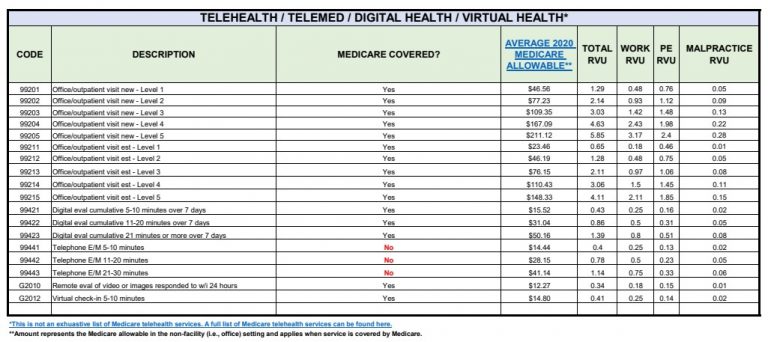Table of Content
Specifically, payers must share lists of covered items and services which require prior authorization, share the corresponding documentation requirements, respond to prior authorization requests within specified timeframes, provide clear reasoning for request denials, and publicly report prior authorization metrics including approvals, denials, and appeals. CMS proposes requirements for an API to streamline the prior authorization processes, that is the process by which a provider must obtain approval from a payer before providing care in order to receive payment for delivering items or services. Specifically, CMS proposes to require impacted payers to build and maintain a FHIR Prior Authorization Requirements, Documentation, and Decision API. The Proposed Rule would not apply to outpatient drugs, drugs that may be prescribed, those that may be administered by a physician, or that may be administered in a pharmacy, or hospital. The Proposed Rule requires impacted payers to collect information about any concurrent payer from patients before the start of coverage with the impacted payer and, within one week of the start of a member’s coverage, to exchange data with any concurrent payers that the member reports. The receiving impacted payer would have to respond with the appropriate data within one business day of receiving the request for a current patient’s data from a known concurrent payer for that patient. To the extent that an individual is enrolled with payers not subject to the Proposed Rule that refuse to exchange data with the impacted payer, the impacted payer would not be required to provide data to that concurrent payer and would not be required to continue to request data exchange quarterly.

These SPADEs are designed to assess cognitive function and mental status, special services, treatments and interventions, medical conditions and comorbidities, impairments, and social determinants of health . The addition of these SPADEs to the Outcome and Assessment Information Set will improve coordination of care and facilitate communication between HHAs and other members of the healthcare community, which is in alignment with CMS’s strategic initiative to improve interoperability. In order to provide sufficient time for providers and suppliers to prepare for the full implementation of the new home infusion therapy benefit in CY 2021, CMS finalized related payment policies in the CY 2020 HH PPS final rule with comment period.
Outcome and Assessment Information Set (OASIS)
The average and median time that elapsed between the submission of a request and a decision by the payer, plan or issuer, for expedited prior authorizations, aggregated for all items and services. The foundational elements that make up PDGM remain unchanged from the proposed rule.Change to 30-day payment periods vs. 60-day. Certification episodes remain 60 days though with all OASIS timing points staying the same.

"These finalized measures are designed to improve patient safety by ensuring that the patient's medication list is provided to a provider and the patient as part of the discharge process," CMS said in a news release. Therapist assistants, as well as therapists, will be allowed to provide maintenance therapy under the Medicare home health benefit. In implementing the new model, CMS will use 30-day care periods rather than 60-day episodes of care as the payment unit. In response to recent occurrences of vaping related disorders, the NCHS is implementing a new diagnosis code, U07.0, Vaping-related disorder, into the International Classification of Diseases, Tenth Revision, Clinical Modification (ICD-10-CM), for reporting vaping-related disorders. Attend this webinar to learn more about the new FINAL rule and how it will directly affect your Medicare home health agency. Agencies will do a better job in diagnostic coding, especially when there are two or more codes that equally meet the definition for the primary diagnosis.
Mar 29, 2020 - Daylight Saving Time Started
An impacted payer is required to respond to a non-impacted payer, however, if that non-impacted payer requests data exchange in accordance with the Proposed Rule. The Proposed Rule would rescind the payer-to-payer data exchange policy that did not impose a standard for the exchange, and proposes to require impacted payers to implement and maintain a payer-to-payer FHIR API to build a longitudinal patient record when the patient moves from one payer to another, or when the patient has concurrent coverage. While non-impacted payers may benefit from implementing the payer-to-payer API, they would not be under any obligation to do so. Therefore, the impacted payers in this Proposed Rule would only be responsible for their own side of the data sharing requests and responses. CMS is modifying current regulations to allow therapist assistants to perform maintenance therapy under the Medicare home health benefit in accordance with individual state practice requirements. This change is in response to comments received on a Request for Information in the CY 2018 HH PPS proposed rule on regulatory flexibilities and efficiencies.
Despite the reversal by CMS of its initially proposed steep payment cuts, many home health agencies and advocacy groups have expressed concern about the methodology used to arrive at the rate adjustments in the 2023 final rule. CMS had previously proposed a cut of 4.2 percent to 2023 payments, which would have been one of the steepest Medicare cuts in years. The previously proposed cuts were the first part of a total 7.69 percent payment cut to Medicare home health services beginning in 2023, as well as clawback cuts totaling $2 billion beginning in 2024 for services already provided during the first two years of the pandemic. One of the goals of the HHVBP Model is to enhance the current public reporting process for home health. CMS believes that publicly reporting HHVBP Model performance data would contribute to more meaningful and objective comparisons among HHAs on their level of quality relative to their peers, incentivize HHAs to improve their quality performance and could enable beneficiaries to make better informed decisions about where to receive care.
Latest Legal News & Analysis
The CY 2020 Home Health Payment System Rate final rule was published last week and, as expected, the Patient-Driven Groupings Model will be implemented for 30-day periods of care starting on or after January 1, 2020. The good news is that CMS reduced the behavioral adjustment to 4.36%, which is just over half of the revised 8.39% estimates that were based on three assumed behaviors outlined in the Table 14 in the final rule. An analysis by the National Association for Home Care & Hospice found that 51 percent of agencies were in danger of going in the red under the proposed payment cuts. After strong opposition from home health providers and advocacy organizations citing the impact on older adults and their bottom line, CMS has reversed course—at least for now. The CMS final rule for 2023 includes an estimated increase to 2023 home health payments of 0.7 percent, or $125 million, compared with 2022. This Proposed Rule officially withdraws, replaces, and responds to the comments received from theDecember 2020 CMS Interoperability proposed rule, further builds on theMay 2020 CMS Interoperability and Patient Access final rule, and diverges from the December 2020 CMS Interoperability proposed rule in a few key ways.

Importantly, both the proposed Patient and Provider Access APIs require that payers share prior authorization request and decision information for medical items and services . On December 6, 2022, the Centers for Medicare & Medicaid Services issued aProposed Rulethat would further enhance health data exchange by establishing data exchange standards for certain payers, improve patient and provider access to health information, and streamline processes related to prior authorization for medical items and services. The regulations impact CMS-regulated payers and provide incentives for providers and hospitals that participate in the Medicare Promoting Interoperability Program and the Merit-based Incentive Payment System . The PARDD API, however, also would allow providers to query the payer’s system to determine whether a prior authorization was required for certain items and services and to identify documentation requirements. Further, the PARDD API would automate the compilation of necessary data for populating the HIPAA-compliant prior authorization transaction and enable payers to provide the status of the prior authorization request, including whether the request has been approved or denied , which would support current Federal and state notice requirements for certain impacted payers. The Centers for Medicare & Medicaid Services today released its home health prospective payment system final rule with comment periodfor calendar year 2020, which increases payments by a net 1.3% ($250 million) relative to 2019.
CMS Finalizes 2020 Home Health Agency Payment and Policy Changes
CMS reiterates in the Proposed Rule that the only reason payers could deny API access to a health app that a patient wishes to use and access through the Patient Access API is potential security risk to the payer. CMS enumerates that these security risks include insufficient authentication or authorization controls, poor encryption, or reverse engineering. The payer must make that determination using objective, verifiable criteria that are applied fairly and consistently across all apps and developers through which patients seek to access their electronic health information. The below summary does not focus on the Medicaid and Children’s Health Insurance Program Fee for Service proposals.
Where OASIS includes only 5 fields for secondary diagnosis codes, the final claims include up to 24 spots and will be the source of record for the PDGM comorbidity calculation. With that, I expect there to be more opportunity for higher comorbidity adjustments. RAPs must still be submitted by all HHAs through 2021 however, until a new “Notice of Admission” is initiated in 2022 requiring reporting of all admissions electronically within 5 days of service to avoid penalty. Including a new Electronic Prior Authorization measure for eligible hospitals and CAHs under the Medicare Promoting Interoperability Program and MIPS eligible clinicians under the Promoting Interoperability performance category of MIPS. Advancing interoperability and improving prior authorization for maternal health.
The Proposed Rule also notes that the Medicare FFS program is evaluating opportunities to improve automation of prior authorization processes, and, if the Proposed Rule is finalized, Medicare FFS would align its efforts for implementing its requirements as feasible. CMS will stop using the number of therapy visits provided to determine payment to home health agencies and instead rely more on clinical characteristics and other patient information, such as diagnosis and functional level, to determine reimbursement. Next year, net Medicare payments to home health agencies will increase by 1.3 percent, or $250 million. Some states have laws and ethical rules regarding solicitation and advertisement practices by attorneys and/or other professionals. The National Law Review is not a law firm nor is intended to be a referral service for attorneys and/or other professionals.
Complex Nursing and second period cases should be evaluated for preventing avoidable LUPA adjustments. The new final rule ends temporary suspension of OASIS data collection on non-Medicare and non-Medicaid patients, and HHVBP will be implemented nationwide starting on January 1, 2023, as expected. Impacted payers would be required to annually report on prior authorization metrics. Payers would have to exchange data with any concurrent payers that member reports within one week of the start of coverage.

No comments:
Post a Comment